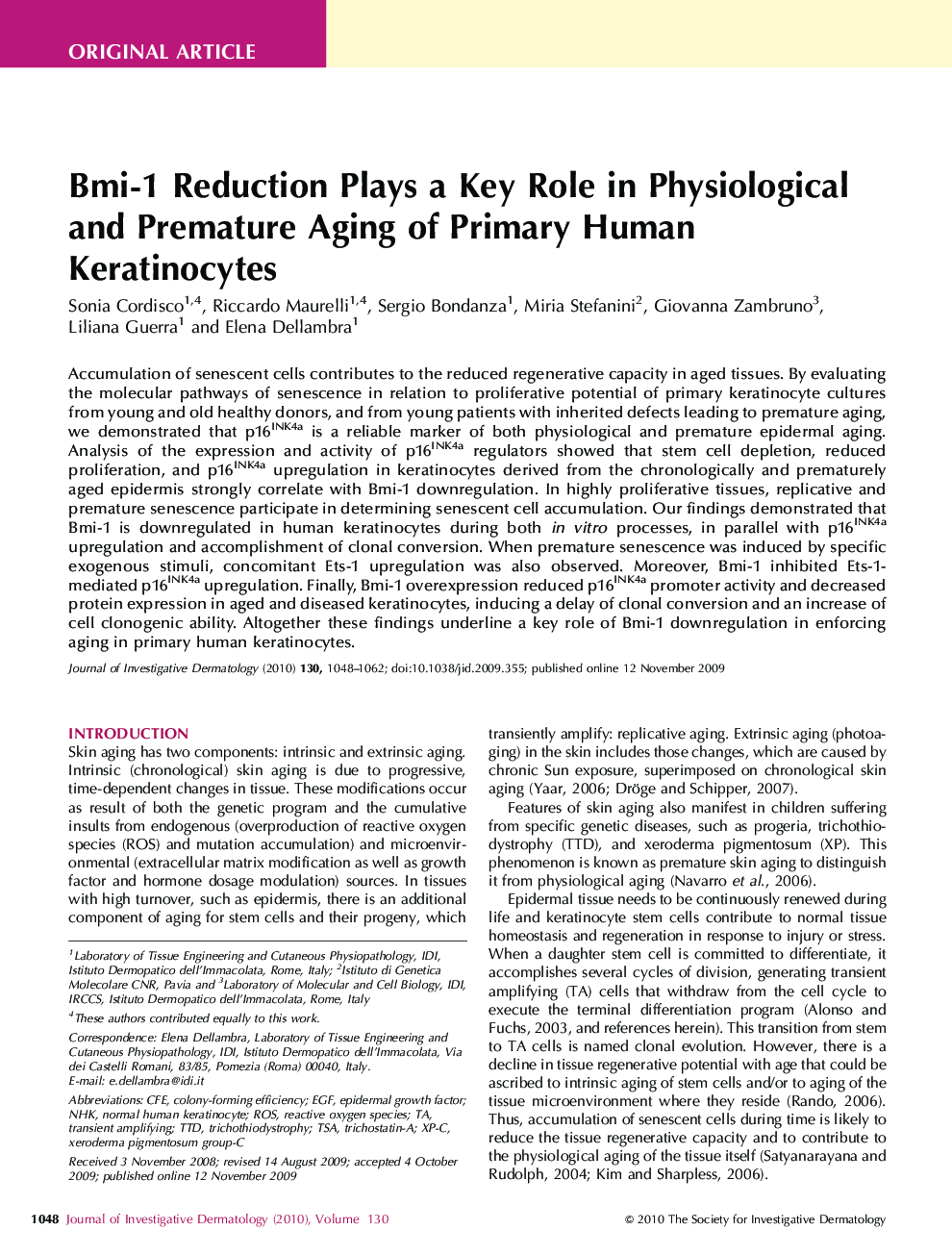| Article ID | Journal | Published Year | Pages | File Type |
|---|---|---|---|---|
| 3216090 | Journal of Investigative Dermatology | 2010 | 15 Pages |
Accumulation of senescent cells contributes to the reduced regenerative capacity in aged tissues. By evaluating the molecular pathways of senescence in relation to proliferative potential of primary keratinocyte cultures from young and old healthy donors, and from young patients with inherited defects leading to premature aging, we demonstrated that p16INK4a is a reliable marker of both physiological and premature epidermal aging. Analysis of the expression and activity of p16INK4a regulators showed that stem cell depletion, reduced proliferation, and p16INK4a upregulation in keratinocytes derived from the chronologically and prematurely aged epidermis strongly correlate with Bmi-1 downregulation. In highly proliferative tissues, replicative and premature senescence participate in determining senescent cell accumulation. Our findings demonstrated that Bmi-1 is downregulated in human keratinocytes during both in vitro processes, in parallel with p16INK4a upregulation and accomplishment of clonal conversion. When premature senescence was induced by specific exogenous stimuli, concomitant Ets-1 upregulation was also observed. Moreover, Bmi-1 inhibited Ets-1-mediated p16INK4a upregulation. Finally, Bmi-1 overexpression reduced p16INK4a promoter activity and decreased protein expression in aged and diseased keratinocytes, inducing a delay of clonal conversion and an increase of cell clonogenic ability. Altogether these findings underline a key role of Bmi-1 downregulation in enforcing aging in primary human keratinocytes.
